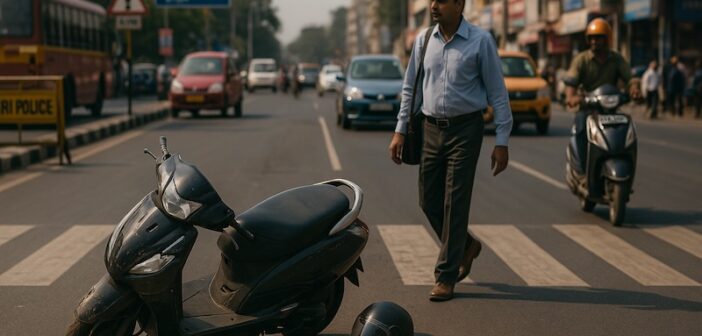TL;DR In road accidents, two-wheelers and pedestrians are the most vulnerable groups, with two-wheeler deaths rising over 38% and pedestrian-related accidents up nearly 58% between 2019 and 2023. While Tamil Nadu and Karnataka reported sharp increases in fatalities, Kerala stands out for reducing deaths despite more crashes.
Context
Within days of the Kurnool bus fire in Andhra Pradesh that claimed around 20 lives, another tragic accident in Telangana’s Ranga Reddy district left 19 people dead after a truck rammed into a passenger bus near Chevella. Similar incidents reported across states in recent weeks highlight the growing frequency and severity of road crashes in India. This analysis looks at trends in road accidents by type of vehicle involved, shedding light on which categories account for the highest number of crashes and fatalities.
Who compiles this data?
Road accident data in India is compiled by the Ministry of Road Transport and Highways (MoRTH). MoRTH collects data annually from the Police Departments of all States and Union Territories and publishes it in its annual report, “Road Accidents in India,” which presents details for each calendar year.
Where can I download clean & structured data on Road Accidents in India?
Clean, structured, and ready-to-use dataset on road accidents by type of impacting vehicle is available for download on Dataful. A collection of datasets on year-, state-, and city-wise details on road accidents, injuries, and deaths in India, categorised by factors such as gender, age, road type, vehicle type, and cause such as over-speeding, signal jumping, wrong-side driving, along with data on accident locations and blackspots, is also available on Dataful.
Key Insights
- In terms of vehicle type, two-wheelers were involved in the highest number of fatalities and accidents throughout the period. The number of deaths attributed to two-wheelers saw a substantial increase of 38.13% between 2019 and 2023.
- The total number of Accidents involving pedestrians grew by over 57.6% from 2019 to 2023, highlighting their extreme vulnerability on the road.
- Despite being heavy commercial vehicles, the volume of accidents, injuries, and fatalities involving trucks and lorries has shown a stabilising or declining trend compared to other categories.
- In Tamil Nadu, the total accidents increased by 17.5%, while fatalities surged by 74.3% between 2019 and 2023, indicating a drastic increase in the severity of road crashes in the state. On the other hand, the neighbouring state, Kerala, is the only major state which recorded a drop in road fatalities, showing an 8.1% decrease even though the total accidents increased by nearly 17%.
- Uttar Pradesh consistently reports the highest absolute number of road fatalities among major states. However, its percentage increase in accidents and fatalities is much lower when compared to other major states like Tamil Nadu, Karnataka, Madhya Pradesh, and Maharashtra. This may be an indication that its high numbers are due to its large baseline volume rather than a rapidly accelerating trend.
- Two-wheelers are the top deadliest vehicle category based on cumulative fatalities (2019-2023) in 14 out of 15 states, including Tamil Nadu, Punjab, Haryana, and Bihar. However, West Bengal is the single exception, where cumulative Pedestrian deaths exceed the Two-Wheeler figures.
- Substantial reductions in Truck/Lorry and Car/LMV fatalities have been recorded in states like Tamil Nadu, Rajasthan, Bihar, and Punjab.
Why does it matter?
India’s roads are becoming deadlier despite infrastructure improvements. The rise in two-wheeler and pedestrian casualties points to gaps in enforcement, road design, and awareness around vulnerable road users. The data also reveal how certain states are managing to reverse fatality trends, offering crucial insights for targeted interventions and policymaking.
Key Numbers
- Two-wheeler fatalities: ↑ 38.1% (2019 to 2023)
- Pedestrian accidents: ↑ 57.6% (2019 to 2023)
- Truck/Lorry fatalities: ↓ in several major states — including Tamil Nadu, Rajasthan, Bihar, and Punjab.



